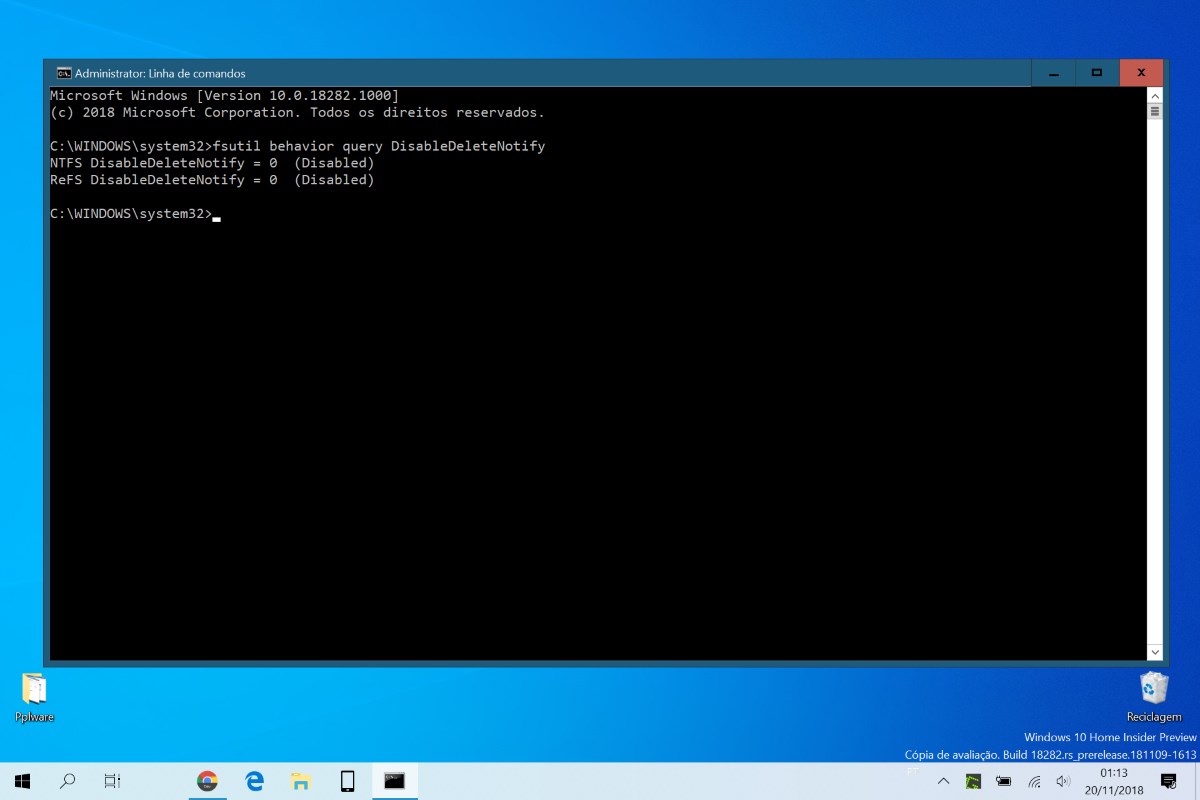
The first is data recovery software, which is a DIY approach that’s typically more.

We’re focusing on two recovery methods today. While SSD data recovery is slightly tricky, it’s very much possible.
#FSUTIL DISABLEDELETENOTIFY HOW TO#
You can also query the 8dot3 name behavior by using the 8dot3name subcommand. fsutil behavior set DisableDeleteNotify 1: Check the status: fsutil behavior query DisableDeleteNotify: How to Recover Data from SSD Drive. Silent deletion of data when the system encounters corruption on an NTFS volume.įile-delete notification (also known as trim or unmap)įor examples of how to use this command, see Examples. The size of the master file table zone (MFT Zone) The frequency with which quota events are written to the system log and to NTFS paged pool and NTFS non-paged pool memory cache levels fsutil behavior set disabledeletenotify NTFS 1 Cách bt h tr TRIM cho h thng file NTFS và ReFS Cách tt h tr TRIM cho h thng file NTFS và ReFS. The updating of the Last Access Time stamp when directories are listed on NTFS volumes The creation of 8.3 character-length file namesĮxtended character use in 8.3 character-length short file names on NTFS volumes Queries or sets NTFS volume behavior, which includes:
#FSUTIL DISABLEDELETENOTIFY WINDOWS 8#
Windows 8.x and 10.x) do not support the DisableDeleteNotify parameter.Applies To: Windows Server 2003, Windows Vista, Windows Server 2008, Windows 7, Windows 8.1, Windows Server 2003 R2, Windows Server 2008 R2, Windows Server 2000, Windows Server 2012 R2, Windows Server 2012, Windows 8 Note 3: Non-server versions of Windows (e.g. All earlier versions (e.g Windows 2008) do not have the same issue. Note 2: Only Windows Server 2012 and later Hosts are affected. Earlier versions of SANsymphony will prevent the Windows Host from sending the commands. Note 1: Only Virtual Disks served from 9.0 PSP4 or greater support the SCSI Trim and Unmap feature.

To verify the current setting use the following command:įsutil behavior query DisableDeleteNotify To re-enable the feature use the following command:įsutil behavior set DisableDeleteNotify 0 Using a Windows CMD window on the Host issue the command:įsutil behavior set DisableDeleteNotify 1 It is possible to disable the SCSI TRIM and Unmap feature on the Host for the duration of the format. (Na pierwszy rzut oka jest to troch zagmatwane - przy wartoci 0 opcja DisableDeleteNotify jest wyczona.

Wszystko jest w porzdku i nie musisz si tym martwi. If the output is DisableDeleteNotify 1, TRIM is currently disabled. Jeli zobaczysz DisableDeleteNotify 0, TRIM jest wczony. Enter the following command: fsutil behavior query DisableDeleteNotify and hit Enter. This will significantly slow down the format process. Zapytanie dotyczce zachowania fsutil DisableDeleteNotify. Type fsutil behavior query DisableDeleteNotify and press Enter. Right-click on the Command Prompt and select Run as Administrator. This behaviour is the same even if the Perform a quick format option is checked. Open the Start menu and type cmd in the search box. And you can use the following command to verify the current setting of NTFS and ReFS: fsutil behavior query disabledeletenotify. Windows Server 2012 (and later) Hosts will by default issue SCSI TRIM and Unmap commands equivalent to the entire size of the Virtual Disk. Please tell me what command you used to set DisableDeleteNotify of NTFS to 1.


 0 kommentar(er)
0 kommentar(er)
